The Star Wars franchise is like McDonald’s—billions and billions sold, with merchandise grossing two, three, or more times the amount of movie tickets. Once inexorably linked to even the anticipation of a new Star Wars film, related toy sales now rise and fall on a variety of factors: dipping after the release of 2017’s The Last Jedi, and soaring in 2020, driven by The Mandalorian streaming series and COVID-19 lockdowns.
Post-The Phantom Menace prequel trilogy, with its bound-for-bargains-bins figures of the much-hated Jar Jar Binks, Lego’s lucrative licensing deal, and Disney’s $4.05 billion acquisition of the Lucasfilm universe in 2012, renewed interest in vintage Star Wars figures has generated demand that far outpaces supply. Even the most prestigious art brokers host exclusive auctions of Star Wars collectibles; Sotheby’s did one in 2015 and another in 2019.
Sure, the 21st century toys are made with collecting in mind—more articulated, beautifully detailed, appearing shockingly true to the movies and TV shows—and some have already appreciated in value. But the first-generation toys have a guileless, unbeatable charm.
What constitutes a vintage Star Wars toy?
Not to be confused with Hasbro’s 2010 “The Vintage Collection,” the items we’re referring to were manufactured for director George Lucas’ first trilogy: Star Wars (1977), The Empire Strikes Back (1980), and Return of the Jedi (1982). The increasingly rare vintage toys changed both the action figure business and movie merchandising forever.
Who made these toys, and what’s the history behind them?
Landing in theaters on May 25, 1977, Star Wars struck American pop culture as squarely as Luke Skywalker’s torpedo drop on the Death Star. Despite an initial limited release, it was a blockbuster, packed with intergalactic characters and futuristic gadgets.
Young fans wanted to play along at home, but there was a problem: Kenner, the Cincinnati, Ohio-based toy company, had signed a licensing deal to make Star Wars toys just a few weeks before the film hit theaters, knowing it typically takes at least a year for design, testing, and approvals. Lucas, however, kept his characters proprietary for as long as possible.
Major companies had passed on rushing product to market for a film they didn’t think would fly, paving the way for a last-minute handshake deal with the plucky, mid-sized midwestern firm.
“20th Century Fox and LucasFilm had been turned down by almost every other toy company that they approached,” Jim Swearingen, who was Kenner’s lead conceptual designer, says. “It was a movie and it could have been in and out of the theater before one toy hit the shelf.”
But Star Wars remained in many theaters for more than a year.
With nothing manufactured to meet 1977’s Christmas deadline, Kenner’s CEO Bernie Loomis green-lit the preposterous sounding but fortuitous “Early Bird Certificate Package,” an I.O.U. for four action figures with a display stand, a “Space Club Card” signed by Luke Skywalker, and stickers. It was a bold move in a retail space for children, who aren’t generally fond of delayed gratification, a gamble that paid off when the franchise turned out to be an indelible cultural force.
Licensing Lucas’ “space opera” itself was a risk for Kenner. “It was science fiction, (which) had been tainted by the marketing of early Star Trek toys,” Swearingen says. But as a fan of both sci-fi and Lucas’ previous films (the dystopian THX 118, and American Graffiti), Swearingen grasped the potential where other toy makers had perceived liability.
What made the toys such a hit at the time?
The key to making the toys work was to divert from the standard-sized articulated toys on the market.
“At Kenner (we) saw the importance of the vehicle play as essential to the line,” he says. “At the time, boys’ figures like G.I. Joe and the Six Million Dollar Man were 12” tall, making vehicles way too big and expensive.”
Loomis instructed his creative team to shrink the figures to the size of the space he made with his thumb and forefinger—3.75”. They’d be less costly to produce, cheaper for consumers, and more portable for kids, who ended up wanting to “collect them all” and recreate scenes from the movie.
Swearingen and a small team made mock-ups quickly; they “kit bashed,” using X-Acto knives and Bondo on existing small figures (Fisher-Price “Adventure People,” according to Swearingen).
What were the first toys produced?
Almost a year after the film’s release, the first four toys shipped directly to the “early birds” were Luke Skywalker, Princess Leia, Chewbacca, and “Artoo-Detoo,” individually bagged in clear plastic and nestled into a four-compartment tray—with a catalog promising more were on the way.
View this post on Instagram
As 1978 rolled on, essential figures rolled in, including Han Solo, C-3PO, Ben (Obi-Wan) Kenobi, Darth Vader, Sand People, Death Squad Commander, Stormtrooper, and the little Jawa.
The line continued to expand, including an X-Wing Pilot version of Luke Skywalker, an R5-D4 droid, a reptilian “creature” (Patrol Dewback), play sets, and vehicles such as the Millennium Falcon, TIE Fighter, and the gliding Land Speeder.
Kenner sold 40 million toys in the year following the first film and another 40 million the year after that, developing broader lines for The Empire Strikes Back and Return of the Jedi. By the end of their vintage era, Kenner had created more than 100 action figures and sold more than 300 million toys.
Why are the first-era Star Wars toys so valuable?
That’s a lot of product floating around the universe to indulge anyone else with enduring love for the story Lucas began telling more than 40 years ago. Yet the scarcity of unopened, first-era toys in mint condition has driven the value of some Star Wars merch skyward.
With their articulated joints and telescoping weapons, the action figures were made to be played with. Loomis called the playability factor of Kenner’s products “toyetics.” Kids who’d waited nearly a year weren’t likely to leave Luke, Leia, R2, and Chewy to suffocate in their little baggies for long.
“I’ve heard stories from people at toy conventions that their parents had purchased one toy for them to play with and one to save, but I think those were rare cases,” Swearingen says.
What are some of the different variants of toys?
In addition to the nostalgia factor, the rough shape of many well-loved toys, and the lasting impact of the movies driving up the cost of vintage Star Wars merchandise, the evolution of the product line created numerous variants that have become collectible.
The initial batch of figures featured “double-telescoping” lightsabers that disappeared into a hollow channel carved into the arms of Luke, Darth, and Obi-Wan, with a fine, extendable plastic wick in the saber itself to be pulled out when it was time for battle.
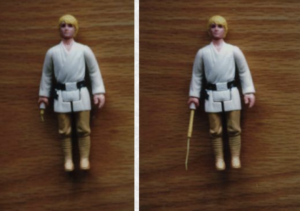
Kenner swiftly redesigned this to be cheaper to manufacture and easier to play with, making the double-telescoping toys especially rare and valued.
Other variants, such as Luke Skywalker’s changing hair color (blonde, brown, sandy), Han Solo’s head size, and others, were simply “factory screw-ups,” Swearingen says.
What are some of the most valuable toys?
Darth Vader and Obi-Wan Kenobi
Good versus evil would get more complicated as the Star Wars films rolled out, but when Kenner’s first line of action figures was produced, countless kids wanted to recreate the duel between Darth Vader and Obi-Wan Kenobi. Both figures were armed with a double-telescoping lightsaber, though at 4.25”, Darth Vader was a little taller than the rest of the line (except for Chewbacca, also 4.25”).
The reason for their scarcity is that few of them made it to market before the redesign to a single telescoping weapon. A 1978 Darth Vader sold in 2018 for nearly $65K, while a 1978 Obi-Wan went for more than $76K in 2017. By comparison, Luke Skywalker figures, which were included in the “early bird” box, aren’t quite as rare; a double-telescoping-sabered Luke sold for $25K in 2015.
Sears Cantina Adventure Set—particularly, Snaggletooth
The simple cardboard Sears Cantina Adventure Set triggers memories of delight (live music in outer space!), but its monetary worth lies in the figures it was sold with—Hammerhead, Walrus Man, Greedo, and Snaggletooth.
A product of Lucas’ tight rein on his intellectual property, Kenner was working from incomplete black and white photographs of these characters and a bit of guesswork was involved in the design. The first Snaggletooth figure was painted like Ziggy Stardust, tall and clad in a royal blue space suit with high silver moonboots (the less silver paint scratched off, the more valuable the figure), not short and red as he appears in the film.
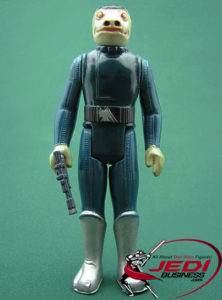
“There wasn’t a lot of reference material available,” Swearingen says. “Kenner went on a hunch and LucasFilm licensing let it go.”
The character was eventually re-sculpted, but not before the figures were also sold in two-packs (Hammerhead/Walrus Man, Greedo/Snaggletooth).
Vinyl-Cape Jawa and Vlix
Some of the most sought-after figures are ancillary characters or redesigns of an initial smaller run.
Jawas, the three-foot-tall junkmen who scavenged the Tatooine desert in woven robes, were infamously mocked up using Kenner VP Dave Okada’s cut-up sock. Smaller than most of the other toys, the 2.25” Jawa action figure was initially manufactured wearing a vinyl cape, which was replaced a few months later with a fabric robe. Sealed, vinyl-cloaked Jawas are extremely rare; one sold at auction in 2020 in the U.K.for £22K (around $30K).
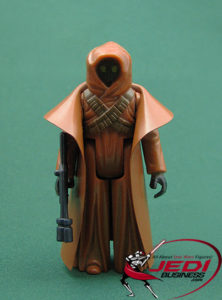
Another character is so rare that casual Star Wars fans may be unaware he exists–Vlix, from the brief, 1985 animated Droids TV series. Released only in Brazil, an elusive Vlix action figure sold in 2018 for more than $45K.
Rocket Firing Boba Fett and Yak Face
The rarest toys are the ones that never actually made it to market in their original form.
A “holy grail” for Star Wars collectors, the Rocket Firing Boba Fett was introduced as a pre-order before The Empire Strikes Back was released. In the interim, a rocket-firing toy made by a different company caused an injury, so Kenner manufactured a non-projectile version instead. A prototype of the original sold in 2019 for more than $185K.
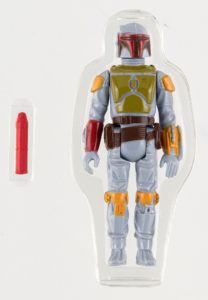
Another coveted outlier, Yak Face, barely made an appearance in Return of the Jedi and had the misfortune of being made at the tail end of Kenner’s vintage era. With the popularity of Star Wars figures falling at the time, the company only shipped Yak Face to a couple of countries outside the U.S. rather than trash the lot; now they’re even more valuable when packaged with matching collectible coins.
1980s Turkish Uzay Brand Knock-offs
Counterfeits and unlicensed goods have been feeding the Star Wars frenzy for decades, but some of the vintage knock-offs are now as pricey as the real thing, particularly the 1980s Turkish Uzay brand. Their misspellings (“StarsWar”) and erroneous characters (“Head Man”) may evoke laughter, but their 3.75” “Blue Stars,” a 1988 blue version of a Hoth Snowtrooper, sold for more than $19K in September 2020.
What were some of the other toy lines produced?
Vehicles and Mini-Rigs
With the release of each new film, Kenner built vehicles of escalating complexity, with functioning lights, buttons, and sounds. Some of the prototypes were magnificent, carved out of mahogany. Even though the finished products were plastic, they created a price gap with the less expensive toys; in the late ‘70s, action figures were generally under two bucks a piece, whereas the Millennium Falcon would’ve set you back around $24.99.
As a way to create mid-price toys, as well as expand the line to satisfy the voracious demand for all things Star Wars, Kenner developed “mini-rigs,” multi-terrain vehicles they designed in-house that weren’t in the movies.
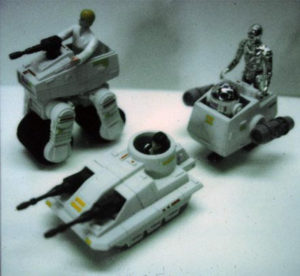
Source: Star Wars Collectors Archive
They proved to be such fan favorites that some of them later made it into the films or TV series, including the Imperial Troop Transporter, which is seen in 2013’s Star Wars Rebels.
1982 Micro Collection
In her book, “Toys and American Culture: An Encyclopedia,” author Sharon Scott points to the 1980s as the moment when consumers began to realize that mint-condition toys were increasing in value. But when Kenner took aim at the growing collectibles market in the early ‘80s with the Micro Collection, it was a flop.
Featuring 70 small, diecast figurines along with truncated playsets and vehicles, the line was meticulously crafted and heavily advertised, but fans were emotionally and financially invested in the earlier products.
Kenner cancelled the Micro Collection, leaving many interesting toys to live on as only prototypes, such as the Bespin Torture Chamber.
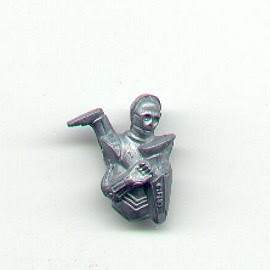
Power of the Force Line
The company refocused with the Power of the Force line in 1985, including the aforementioned Yak Face and character-minted coins, and a Storm Trooper-outfitted Luke Skywalker.
Without a new movie, though, interest and sales waned through the rest of the ‘80s and into the ‘90s after this line. Kenner ceased production of Star Wars merch and was acquired by Hasbro in 1991. Buying Star Wars products during this “dark time” was almost like buying vinyl albums during the CD era—it would turn out that their demise had been greatly exaggerated.
How are the toys graded?
For serious forecasters, it’s worth investigating grading companies like Action Figure Authority (AFA) or Collector Archive Services (CAS). They evaluate condition—everything from paint to joints to blister packs—and authenticity, not value; only the market determines that.
AFA grades action figures and related toys using four scales: Modern (post-1995, sealed), Standard (pre-1995, sealed), Loose (complete toys only), and Qualified (“opened package toys with new contents, handmade prototype toys, incomplete rare and pre-production loose toys, and autographed toys” accompanied by verifying documentation).
Standard Pre-1995 toys, like the most valuable vintage Star Wars figures, are graded from 10 (very poor, Bronze level) to 100 (gem, mint, Gold level), with some caveats; for example, an autograph is considered a flaw since it’s difficult to verify.
For an additional fee, AFA will seal collectibles in hard acrylic before shipping it back. They also handle eBay or PayPal disputes.
Will original Star Wars toys continue their surge in value? Which contemporary figures will be much-hunted vintage goods in the future? You may find prognosticating charts online. Or you may find the answer in the eyes of Gen-Z or Gen-Alpha kids who’ve latched onto The Mandalorian and Baby Yoda, as yet another generation embarks upon the journey of Star Wars discovery.